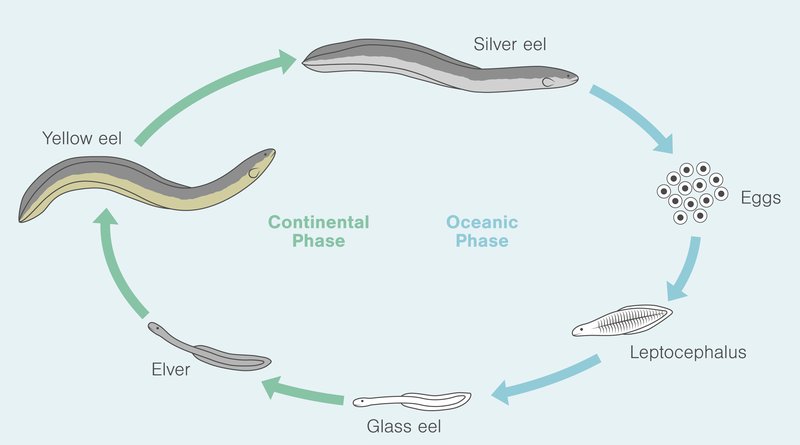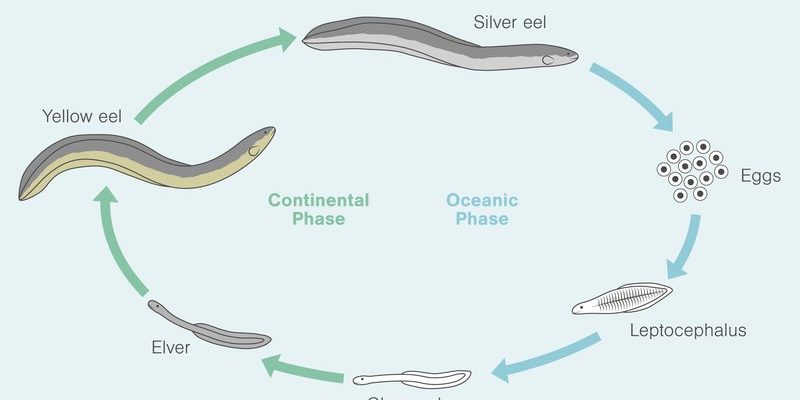
Electric eels are not actually eels; they are a type of knifefish found in the Amazon and Orinoco river basins. But don’t let their name fool you! These creatures have a rich reproductive life that involves unique behaviors and adaptations. Imagine their breeding rituals as a dance—a complex choreography that ensures the continuation of their species. So, grab a cup of coffee, and let’s break down the fascinating world of electric eel reproduction.
Understanding Electric Eel Biology
Before we dive into reproduction, it’s essential to get a grasp of what electric eels are all about. They can grow up to 8 feet long and are famous for their ability to produce high-voltage electricity. This talent isn’t just for show—it’s a vital part of their survival. Electric eels use electricity for navigation, communication, and hunting.
These eels have three types of electric organs: the discharge, main, and Hunter’s organs. Think of them as specialized batteries, designed for different tasks. The discharge organ can produce bursts of up to 600 volts! This helps the eel not only in hunting but also in defending itself against predators or rivals.
Understanding their biology sets the stage for their reproduction. It’s during the breeding season that these electric organs play a key role in attracting mates.
Breeding Season: Timing and Conditions
The breeding season for electric eels usually occurs during the rainy season, which varies by location but often falls between April and August. This is crucial because rising water levels create ideal conditions for nesting. The floodwaters help to provide ample moisture and cover, making it safer for young eel fry.
During this time, males will start to perform elaborate displays to attract females. If you’ve ever seen a peacock spread its feathers, you’ll have a good visual of what’s happening here. Male electric eels will swim vigorously and emit electric pulses to communicate their readiness to breed. This display can be quite the light show—only in electric form!
What’s fascinating is that male eels can become territorial during mating season. They may engage in skirmishes to establish dominance, showcasing their electric abilities in a different way. It’s survival of the fittest, both in terms of electricity and strength.
The Mating Ritual
Once a female has been attracted, the mating ritual can begin. You might be wondering how this works since electric eels don’t have traditional reproductive organs. Instead, they reproduce through a form of external fertilization, which is quite unusual among fish.
During the mating process, the male and female will swim in tandem, performing a sort of synchronized dance. It might look like a graceful ballet in the water. When the female is ready, she releases her eggs, which can be in the thousands, into the water. The male will follow closely behind to fertilize them.
After fertilization, the eggs float to the surface. This is where the electric eel’s unique adaptations come into play. The embryos are at risk, so they need protection. That’s why the breeding occurs in shallow waters—where the young can be safe from larger fish that might want to snack on them.
Nesting and Parental Care
After the eggs are fertilized, they need a safe place to develop. Electric eel parents are quite attentive. The female will often stay nearby, ensuring no predators disturb the nest.
Interestingly, while electric eels do not exhibit the same level of parental care seen in many other fish species, they do remain protective of the nest. The eggs hatch in about 2-3 weeks, but the young eels are tiny—only about 1-2 inches long.
As these little electric eels emerge, they’re not entirely helpless. They have instinctual behaviors that allow them to start navigating and hunting small prey almost immediately. However, they benefit from staying close to the nest for a while until they grow larger and better equipped for survival in the vast river systems where they live.
The Role of Electricity in Mating
Electricity plays a crucial role not just in their hunting or navigation but also in their mating rituals. As mentioned earlier, male electric eels emit electric pulses to attract females. Think of it as a form of communication, much like how we use words or body language.
These electric signals can vary in strength and rhythm, and females are known to respond to specific patterns. This complex dance of signals helps ensure that the right mate is chosen, based on the strength of their electric pulses and displays. It’s like a very charged Tinder date!
Research suggests that these electrical displays can convey a lot of information, like the male’s health, vitality, and genetic fitness—traits that a female would naturally want in a partner. Isn’t it fascinating how something as simple as electricity can influence such important decisions in the animal kingdom?
Challenges in Electric Eel Reproduction
Like many species, electric eels face numerous challenges during reproduction. Humans have greatly impacted their natural habitats through pollution, deforestation, and overfishing, reducing their breeding grounds. When the water quality deteriorates, it can hinder their ability to reproduce successfully.
Climate change also plays a role. Changes in rainfall patterns can disrupt the timing of the breeding season. If the rainy season doesn’t align with their reproductive cycle, it can lead to fewer successful hatchings.
Then there’s the issue of competition. With their habitats shrinking, electric eels may have to compete for mates and resources. This can lead to decreased genetic diversity, making them more vulnerable to disease and environmental changes.
In summary, the breeding and reproduction of the electric eel are truly remarkable. From their unique mating rituals to the role electricity plays in their lives, there’s so much to learn about these fascinating creatures. They embody the complexity of life in river ecosystems and highlight the delicate balance needed for their survival.
Protecting their habitats is crucial for ensuring that this electric marvel continues to thrive in the wild. Understanding their reproduction is a step toward that protection. So next time you think of electric eels, remember—they’re not just shockingly cool creatures; they’re also a testament to nature’s intricate designs. The journey of electric eels from egg to fully-grown fish is a vibrant story that reflects the importance of preserving our natural world.

